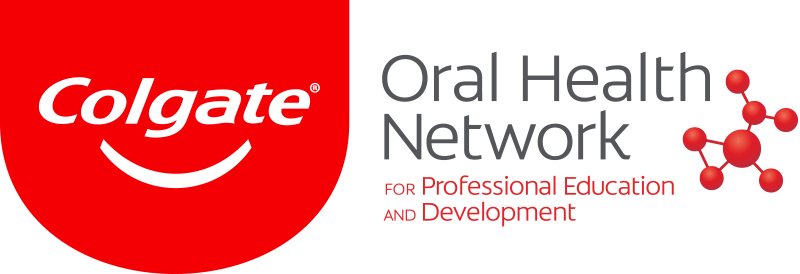CHICAGO, Ill., USA: A recently released National Center for Health Statistics (NCHS) data brief details the results of the National Health and Nutrition Examination Survey (NHANES) 2011-2012. The NHANES survey is co-sponsored by the Centers for Disease Control and Prevention (CDC) and the National Institute of Dental Craniofacial Research (NIDCR).
Data from the NHANES 2011-2012 indicates that approximately 91 percent of adult Americans between the ages of 20 and 64 have dental caries. The high prevalence of the caries underscores the importance of preventive oral health care, according to the American Dental Hygienists’ Association (ADHA).
“This report reinforces the need for greater attention to prevention as it relates to oral health,” said ADHA President Kelli Swanson Jaecks, MA, RDH. “Effective strategies for assessing caries risk and management are well-documented in current scientific literature, and yet the condition remains prevalent, and is even increasing in vulnerable populations.”
The NHANES 2011-2012 focused on age and ethnicity as related to incidence of caries, presence of untreated caries, retention of all permanent teeth and complete edentulousness.
Findings included that while the adults most likely to experience caries are non-Hispanic white, the ones most likely to have untreated caries were are non-Hispanic Black or Hispanic. Non-Hispanic black adults were also the most likely to be edentulous.
“People are living longer,” said ADHA Executive Director Ann Battrell, MSDH, “and the factors that affect oral and overall health are becoming increasingly complex as the American population ages. The information from this data brief allows oral health care providers to use an evidence-based approach to preventive oral health care and disease management. Our collective efforts can improve the public’s overall health and quality of life.”
(Source: American Dental Hygienists’ Association)
WASHINGTON/NEW YORK, USA: According to the Academy of General Dentistry (AGD), more needs to be done to improve children’s oral health, as oral ...
CHICAGO, Ill., USA: An editorial in the December 2016 issue of The Journal of the American Dental Association (JADA) discusses the FDI Dental World ...
NEW YORK, N.Y., USA: Western Dental, one of the nation’s leaders in accessible, affordable oral health care, recently announced a first-of-its-kind ...
At the 2017 Greater New York Dental Meeting, Henry Schein Dental hosted about a dozen members of the industry press Monday morning in the exhibit hall in a ...
SACRAMENTO, Calif., USA: The release of Gov. Jerry Brown’s proposed 2016-17 budget highlights a critical juncture for the state’s Medi-Cal ...
NEW YORK, N.Y., USA: A report released June 23 by The Pew Charitable Trusts concludes that a lack of access to dental care in the United States, especially ...
Curve Dental, developers of Web-based dental software, recently announced the release of version 4.14, the company’s latest software upgrade. With ...
CHICAGO, Ill., USA: More than 16 million U.S. children suffer from dental decay, and research shows that many parents lack basic information about oral ...
NEW YORK, N.Y., USA: With intelligence, ambition and a naturally outgoing personality, Stephanie seemed to have a bright future ahead of her. Unfortunately,...
ALBUQUERQUE, N.M., USA: OCO Biomedical will feature “Time to Change the Way You Provide Implant Treatment,” a special presentation, in ...
Live webinar
Fri. 26 April 2024
12:00 PM EST (New York)
Live webinar
Mon. 29 April 2024
12:30 PM EST (New York)
Prof. Roland Frankenberger Univ.-Prof. Dr. med. dent.
Live webinar
Tue. 30 April 2024
1:00 PM EST (New York)
Live webinar
Fri. 3 May 2024
1:00 PM EST (New York)
Live webinar
Tue. 7 May 2024
8:00 PM EST (New York)
Live webinar
Thu. 9 May 2024
8:00 PM EST (New York)
Live webinar
Mon. 13 May 2024
9:00 AM EST (New York)



 Austria / Österreich
Austria / Österreich
 Bosnia and Herzegovina / Босна и Херцеговина
Bosnia and Herzegovina / Босна и Херцеговина
 Bulgaria / България
Bulgaria / България
 Croatia / Hrvatska
Croatia / Hrvatska
 Czech Republic & Slovakia / Česká republika & Slovensko
Czech Republic & Slovakia / Česká republika & Slovensko
 France / France
France / France
 Germany / Deutschland
Germany / Deutschland
 Greece / ΕΛΛΑΔΑ
Greece / ΕΛΛΑΔΑ
 Italy / Italia
Italy / Italia
 Netherlands / Nederland
Netherlands / Nederland
 Nordic / Nordic
Nordic / Nordic
 Poland / Polska
Poland / Polska
 Portugal / Portugal
Portugal / Portugal
 Romania & Moldova / România & Moldova
Romania & Moldova / România & Moldova
 Slovenia / Slovenija
Slovenia / Slovenija
 Serbia & Montenegro / Србија и Црна Гора
Serbia & Montenegro / Србија и Црна Гора
 Spain / España
Spain / España
 Switzerland / Schweiz
Switzerland / Schweiz
 Turkey / Türkiye
Turkey / Türkiye
 UK & Ireland / UK & Ireland
UK & Ireland / UK & Ireland
 International / International
International / International
 Brazil / Brasil
Brazil / Brasil
 Canada / Canada
Canada / Canada
 Latin America / Latinoamérica
Latin America / Latinoamérica
 China / 中国
China / 中国
 India / भारत गणराज्य
India / भारत गणराज्य
 Japan / 日本
Japan / 日本
 Pakistan / Pākistān
Pakistan / Pākistān
 Vietnam / Việt Nam
Vietnam / Việt Nam
 ASEAN / ASEAN
ASEAN / ASEAN
 Israel / מְדִינַת יִשְׂרָאֵל
Israel / מְדִינַת יִשְׂרָאֵל
 Algeria, Morocco & Tunisia / الجزائر والمغرب وتونس
Algeria, Morocco & Tunisia / الجزائر والمغرب وتونس
 Middle East / Middle East
Middle East / Middle East
:sharpen(level=0):output(format=jpeg)/up/dt/2024/04/Envista-names-Paul-Keel-new-CEO-1.jpg)
:sharpen(level=0):output(format=jpeg)/up/dt/2024/02/vVARDIS_article_1920x1080px.jpg)
:sharpen(level=0):output(format=jpeg)/up/dt/2024/04/Study-links-e-cigarette-use-with-increased-risk-of-heart-failure.jpg)
:sharpen(level=0):output(format=jpeg)/up/dt/2024/04/web_FDC_small.jpg)
:sharpen(level=0):output(format=jpeg)/up/dt/2024/04/web_Bassi.jpg)








:sharpen(level=0):output(format=png)/up/dt/2011/11/ITI-LOGO.png)
:sharpen(level=0):output(format=png)/up/dt/2023/03/ACTEON_NEW-logo_03-2024.png)
:sharpen(level=0):output(format=png)/up/dt/2014/02/3shape.png)
:sharpen(level=0):output(format=png)/up/dt/2013/01/Amann-Girrbach_Logo_SZ_RGB_neg.png)
:sharpen(level=0):output(format=png)/up/dt/2022/06/RS_logo-2024.png)
:sharpen(level=0):output(format=png)/up/dt/2023/06/Align_logo.png)
:sharpen(level=0):output(format=jpeg)/up/dt/e-papers/330729/1.jpg)
:sharpen(level=0):output(format=jpeg)/up/dt/e-papers/330727/1.jpg)
:sharpen(level=0):output(format=jpeg)/up/dt/e-papers/330725/1.jpg)
:sharpen(level=0):output(format=jpeg)/up/dt/e-papers/325039/1.jpg)
:sharpen(level=0):output(format=jpeg)/up/dt/e-papers/325007/1.jpg)
:sharpen(level=0):output(format=jpeg)/up/dt/e-papers/313543/1.jpg)
:sharpen(level=0):output(format=jpeg)/up/dt/2017/01/fc0070cccca0558e3a5deb335085adf7.jpg)

:sharpen(level=0):output(format=jpeg)/up/dt/2024/04/Envista-names-Paul-Keel-new-CEO-1.jpg)
:sharpen(level=0):output(format=gif)/wp-content/themes/dt/images/dt-user.gif)
:sharpen(level=0):output(format=jpeg)/up/dt/2010/04/fc14ae8f33184bef675628ff41bb0a58.jpg)
:sharpen(level=0):output(format=jpeg)/up/dt/2017/03/2e2059a002c071dac51523a8dc1e038e.jpg)
:sharpen(level=0):output(format=jpeg)/up/dt/2017/01/ddae1de183c6a2b1fbf99fc9f9508a0b.jpg)
:sharpen(level=0):output(format=jpeg)/up/dt/2017/11/Schein_Calabrese-1.jpg)
:sharpen(level=0):output(format=jpeg)/up/dt/2017/01/88773cb95fcccf56e2476dcaf79d938e.jpg)
:sharpen(level=0):output(format=jpeg)/up/dt/2017/01/1187aa9226e94c2587655008850d29db.jpg)
:sharpen(level=0):output(format=jpeg)/up/dt/2017/01/3b54a7799c78b7890c80cd1794c3cb84.jpg)
:sharpen(level=0):output(format=jpeg)/up/dt/2017/01/3c3b95e307c12e6adad29ca06f6f3858.jpg)
:sharpen(level=0):output(format=jpeg)/up/dt/2017/01/1aadea784c211fbca1ac8365f7026571.jpg)
:sharpen(level=0):output(format=jpeg)/up/dt/2017/01/bec633b6960418122b318f01240c28e9.jpg)





:sharpen(level=0):output(format=jpeg)/up/dt/2024/04/Envista-names-Paul-Keel-new-CEO-1.jpg)
:sharpen(level=0):output(format=jpeg)/up/dt/2024/02/vVARDIS_article_1920x1080px.jpg)
:sharpen(level=0):output(format=jpeg)/up/dt/2024/04/Study-links-e-cigarette-use-with-increased-risk-of-heart-failure.jpg)
:sharpen(level=0):output(format=jpeg)/up/dt/e-papers/330727/1.jpg)
:sharpen(level=0):output(format=jpeg)/up/dt/e-papers/330725/1.jpg)
:sharpen(level=0):output(format=jpeg)/up/dt/e-papers/325039/1.jpg)
:sharpen(level=0):output(format=jpeg)/up/dt/e-papers/325007/1.jpg)
:sharpen(level=0):output(format=jpeg)/up/dt/e-papers/313543/1.jpg)
:sharpen(level=0):output(format=jpeg)/up/dt/e-papers/330729/1.jpg)
:sharpen(level=0):output(format=jpeg)/up/dt/e-papers/330729/2.jpg)
:sharpen(level=0):output(format=jpeg)/wp-content/themes/dt/images/3dprinting-banner.jpg)
:sharpen(level=0):output(format=jpeg)/wp-content/themes/dt/images/aligners-banner.jpg)
:sharpen(level=0):output(format=jpeg)/wp-content/themes/dt/images/covid-banner.jpg)
:sharpen(level=0):output(format=jpeg)/wp-content/themes/dt/images/roots-banner-2024.jpg)
To post a reply please login or register